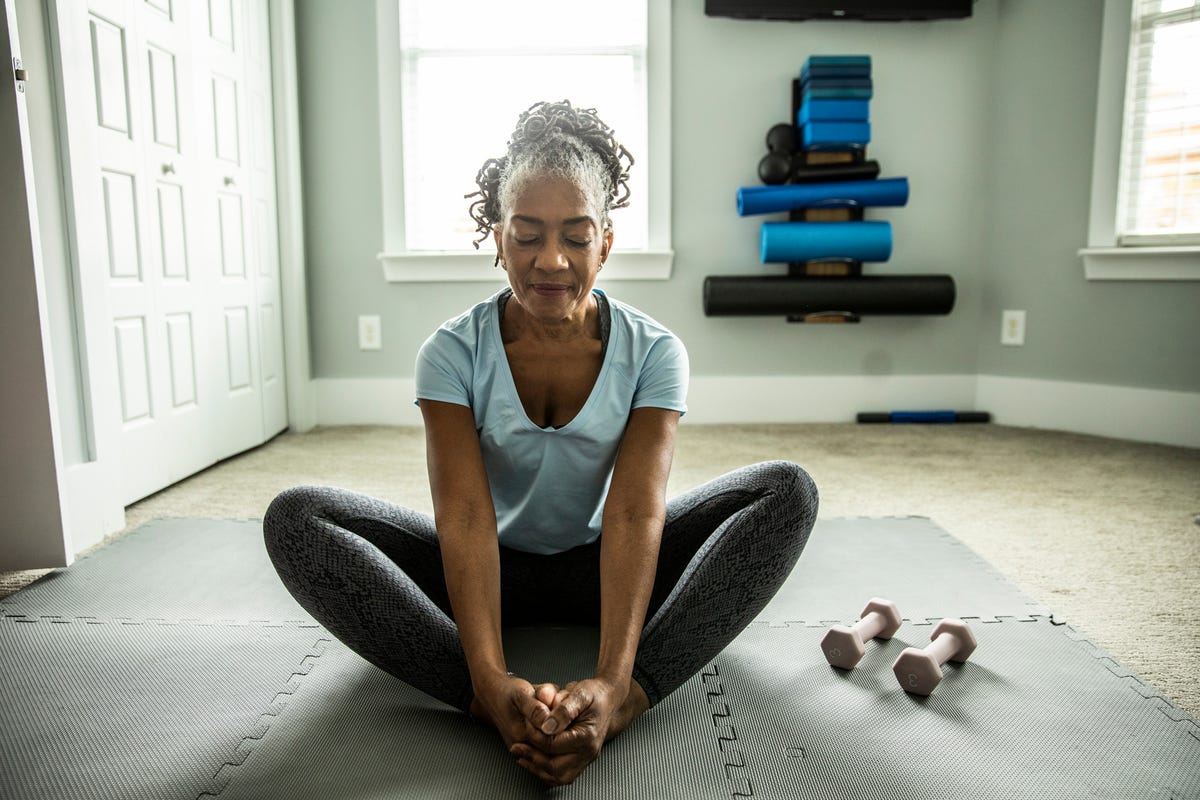You don’t need to go on a 45-minute run or lift weights for an hour to have a beneficial workout. Carving out just 15 minutes a day of exercise has proven to be beneficial for your health and life expectancy.
Fifteen minutes may not seem like a lot of time to you, but fitness experts and scientific studies agree that it’s enough to make a difference. Any amount of exercise is better than zero. If you’re new to fitness or haven’t been active in a long time, a short, 15-minute workout may be best to start with anyway.
The American College of Sports Medicine recommends starting light when it comes to fitness with just 10-15 minutes a day of activity. Whether it’s walking or something more involved, these short workouts can still be hugely beneficial to your body. Plus, starting small will help you establish a workout routine in your day-to-day.
Keep in mind that exercise recommendations are not one-size-fits-all, so it may take some time to figure out what you need, what you enjoy and what works for you. If you have any health conditions that could affect your exercise routine, be sure to speak with your health care provider before starting a new regimen. Here’s what to know about how to start exercising for overall better health.
Start simple

Mei Xu/EyeEm/Getty Images

When in doubt, start with walking. Walking is a great way to get your body moving without getting overwhelmed. Plus, you can add 15 minutes of walking to your daily routine even if you’ve never exercised before — it’s that easy.
Going for a brisk walk can help get your heart rate up. According to the Harvard School of Public Health, this can, in turn, help lower blood pressure and boost energy. It will also get your body used to a workout routine and start to build up your stamina. To reap the full benefits of a walking workout, remember you’re not window shopping. Make sure your pace is brisk enough to increase your breathing but still allows you to carry on a conversation.
Make sure you’re wearing good walking shoes that provide enough support for your feet. Find a quiet nature trail to add some mental health benefits to the deal, or listen to music or a podcast to make the time pass more quickly. That can be especially helpful if you’re worried you’ll be focused on how much longer you have rather than just enjoying the walk.
And you can walk wherever suits your lifestyle — whether you’re walking around the park, your neighborhood, on a treadmill or even around your apartment, movement is movement. Don’t be afraid to get creative with your walking time or incorporate it into your day-to-day life. If you use public transit, for example, you could walk to the next stop rather than the one closest to your home.
As you walk more, you’ll probably start to walk more quickly, which is great, because you’ll get your blood pumping more. This will also equip you to move on to other, more intense workouts. Don’t feel like you need to push yourself into these workouts — go at a pace that your body is comfortable with. There’s no rush in making your way to a rigorous workout. Simply walking 15 minutes a day can truly make a difference in your overall health.
Other 15-minute workouts to try

Tony Anderson/Getty Images
Whether you don’t want to walk for your daily movement goal or you’re ready for more of a challenge, there are other 15-minute workouts you can try.
Some 15-minute workouts that can work for a variety of fitness levels include:
- Yoga: Yoga practices run the gamut in experience levels, so you can run through a couple sequences in your living room in poses that feel comfortable to you. Depending on the style of yoga you practice, you can incorporate stretching, aerobic exercise and/or strength training.
- High Intensity Interval Training: HIIT is a great way to get your heart rate up as you do short bursts of maximum-effort cardio, followed by short periods of rest. Because the intervals are short and customizable, you can easily fit them into 15 minutes. Remember to leave a rest day in between HIIT workouts. If you are working out five days a week for example, you could include HIIT training on Monday, Wednesday and Friday, leaving Tuesday and Thursday for a different type of workout.
- Bodyweight Training: Bodyweight workouts are ideal for those new to fitness because you can do them at home and they require no equipment — you’re literally using your own body weight as resistance. These exercises include things like pushups and situps. As with HIIT, you can do these in short circuits when you have a spare 15 minutes.
- Full-Body Workouts: When you have limited time, it makes sense to do exercises that work several different muscle groups at once. Some activities, like swimming or rowing, are true full-body exercises. You can also alternate exercises over the course of 15 minutes to work out your whole body — for example, pushups along with squats.
Is 15 minutes enough?
The Centers for Disease Control and Prevention recommends 150 minutes of moderate exercise every week for adults, which boils down to 30 minutes per day if you’re working out five days and resting for two. But what do you do if you truly only have 15 minutes a day to devote to working out?
You’ll be happy to know that several studies over the years have found benefits of short durations of exercise, such as 10, 15 or 20 minutes a day. For example, a 2011 study in The Lancet concluded that working out for 15 minutes a day increased life expectancy. A 2016 study in the European Society of Cardiology found that older adults who exercised 15 minutes a day had a lower risk of death. Even 15 minutes of vigorous activity per week was linked to a lower risk of premature death in one 2022 study.

Wera Rodsawang/Getty Images
Often, a 15-minute workout is a space filler or a stepping stone, but it doesn’t have to be. If you simply like a 15-minute workout or don’t have time for anything longer, you can still find health benefits here. Remember some of your everyday activities likely count toward your weekly physical activity quota as well.
Keep in mind that your fitness routine should still be well-rounded, even if the sessions are shorter. It’s important to practice both cardio exercise and strength training, either at the same time or on different days. Cardio strengthens your heart and lungs, while strength training builds or tones muscle. Together, these two types of training offer a complete workout that keeps your body healthy as a whole. It’s also important to build rest days into your schedule, especially if you’re doing high-intensity activities.
Bottom line
Don’t be afraid to start with a simple fitness routine after you’ve asked yourself how to start working out, even if you’ve never worked out a day in your life. While the gym can be daunting and workout videos can be intimidating, something as simple as going for a walk around your neighborhood can have a positive effect on your overall health. Simply getting out and getting your body moving is a great way to boost your fitness. There are plenty of ways to move, it’s all a matter of finding a routine that works for you!
The information contained in this article is for educational and informational purposes only and is not intended as health or medical advice. Always consult a physician or other qualified health provider regarding any questions you may have about a medical condition or health objectives.


